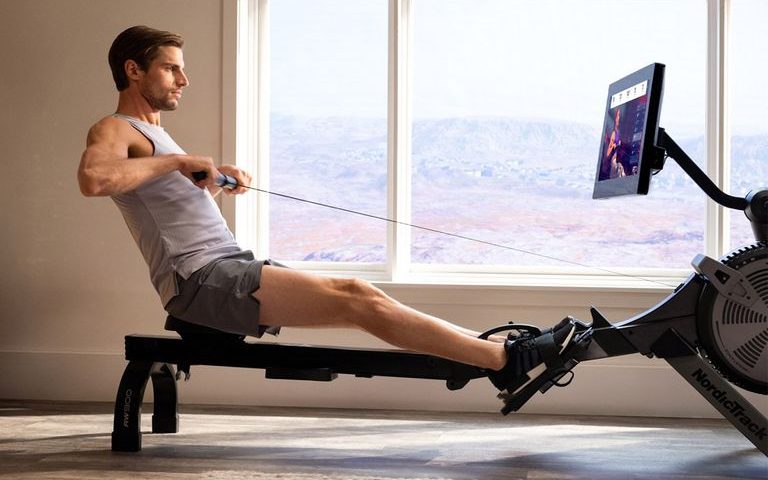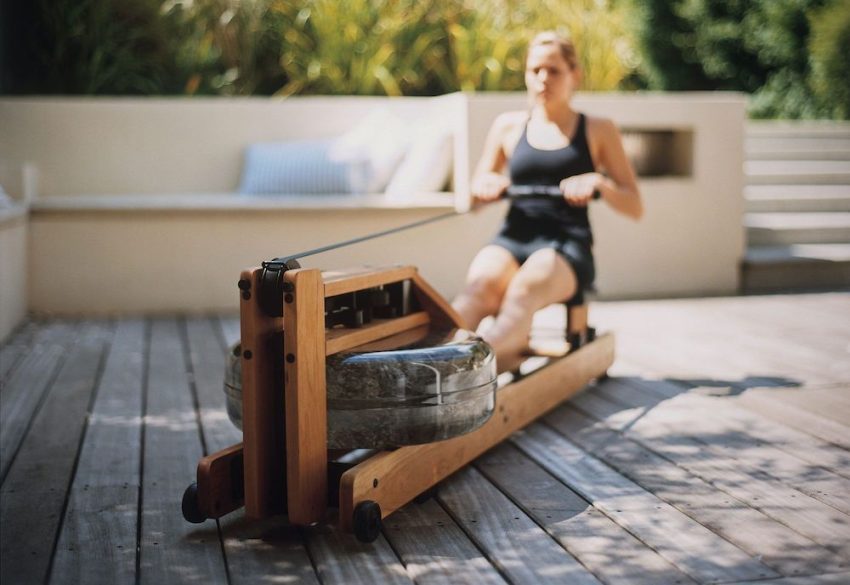Hey there, my fellow fitness aficionados! Have you found yourself drawn to the rowing machine at your local gym, or have you taken the plunge and invested in one for your home? If so, congratulations! You’ve unlocked a powerhouse workout that engages every major muscle group in your body, torches calories and enhances cardio fitness.
But here’s the kicker: mastering the rowing machine isn’t as easy as pulling a handle back and forth. It’s about blending power and precision, speed and control, strength, and finesse. That’s why I’ve decided to let you in on some common rowing machine mistakes and, more importantly, how to fix them. So buckle up because it’s going to be an educational ride!
Mistake 1: Incorrect Posture
We’ve all seen it—the hunched shoulders, the rounded back—it’s the telltale sign of the dreaded bad rowing posture. But it’s not just about aesthetics. Poor posture can lead to muscle strain, particularly in your lower back, and reduce the effectiveness of your workout.
To correct it, imagine there’s a rod running down your spine, keeping you upright. Your back should be straight but relaxed. You want to engage your core throughout the entire stroke, providing stability to your body and power to your stroke.
Mistake 2: Pulling with the Arms First
Many beginners fall into the trap of initiating the stroke by pulling with their arms. But rowing is a leg-dominant exercise—about 60% of the power should come from your legs, 20% from your core, and 20% from your arms.
To fix this, remember the sequence: legs, core, arms – arms, core, legs. During the drive, you push with your legs first, then lean back with your core, and finally pull with your arms. For the recovery, it’s the reverse. Extend your arms out, hinge forward at your hips, and then bend your knees.
Mistake 3: Overextending Knees or Back
When it comes to the finish of the rowing stroke, some people tend to overdo it by either shooting their knees down too quickly or leaning too far back. Overextending not only robs you of power in the stroke, but it can also increase the risk of back and knee injuries.
At the end of the drive, your legs should be extended but not locked out, and your body should be leaning back at just a slight angle—around 11 o’clock if you think of your body as a clock face.
Mistake 4: Racing Through the Stroke
Rowing isn’t a sprint (well, most of the time)—it’s about rhythm and control. One of the most common mistakes beginners make is racing through the stroke, thinking that rowing faster means a better workout.
The truth is rowing is all about power and efficiency. Aim for a smooth, controlled motion. There should be a distinct pause at the end of the recovery before you drive back for the next stroke. And remember, the recovery should take roughly twice as long as the powerful drive.
Mistake 5: Neglecting the Core
Rowing is a full-body exercise, and that includes your core. A common mistake is neglecting to engage the core during the stroke. Your abs, lower back, and obliques are all vital players in both stabilizing your body and powering your stroke.
Focus on keeping your core engaged throughout the entire stroke. This not only helps with power but also protects your lower back. Think of your core as the strong, stable base that the rest of your movements revolve around.
Mistake 6: Improper Foot Placement
This might seem minor, but incorrect foot placement can negatively affect your stroke and potentially lead to injuries. If your feet aren’t secured correctly, you won’t be able to drive as powerfully with your legs, and you risk straining your ankles.
Your footplate should be adjusted so that the strap goes over the ball of your foot, allowing for a firm push-off. Your feet should be flat and secure throughout the entire stroke.
Mistake 7: Not Using the Full Range of Motion
Another common mistake is not using the full range of motion. This means not extending fully during the recovery or not driving back fully during the drive. Shortchanging your stroke not only reduces the effectiveness of your workout but can also throw off your rhythm.
Aim to ‘reach’ with your handle over your feet at the end of the recovery, and then drive back until your legs are extended, your body is slightly reclined, and your arms are drawn into your body.
Wrap up

The truth is, it’s easy to fall into a rut with the rowing machine. We’re all human, and we all make mistakes. But by identifying and correcting these common errors, you can not only prevent injuries but also maximize the benefits from each rowing session.
Remember, rowing is a journey, not a destination. It’s about constant learning, improving, and striving to row better today than you did yesterday. Every stroke is a new opportunity to improve, so keep rowing, keep learning, and keep improving. And remember, the best workout is a safe workout.
Happy rowing, my friends. Let’s get out there and make every stroke count!
